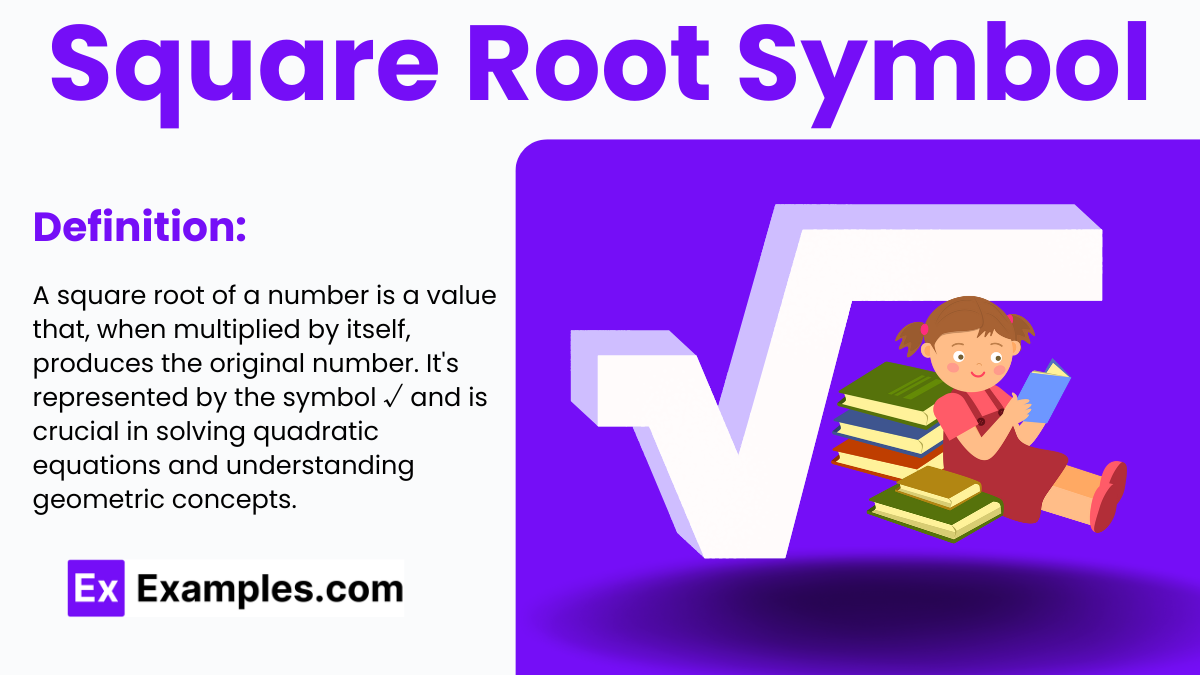What is the square root of 16?
2
3
4
5


The square root symbol, represented as √, is a mathematical notation that signifies the operation of finding the square root of a number. This fundamental concept in algebra applies to both rational and irrational numbers, indicating the number that, when multiplied by itself, equals the original number. Square roots play a crucial role in various mathematical fields, including geometry, where they are essential for calculating distances and magnitudes. They are also integral to statistical analyses through methods like the least squares method, which is used to minimize the differences in statistical estimates. Understanding and utilizing square and square roots, whether the numbers are integers or not, is essential for solving a broad spectrum of mathematical problems.
Where 𝑦 is the square root of 𝑥. This operation is fundamental in various areas of mathematics, including algebra, geometry, and calculus. The concept of square roots can be applied to both rational and irrational numbers, and it is essential for solving equations, understanding geometric properties, and performing many technical calculations in science and engineering.
Finding the square root of 25.
Determining the square root of a rational number (16) and an irrational number (2).
Solving quadratic equations using square roots.
Calculating the diagonal of a square with side length 𝑎a.
Using the least squares method to find the best fit line in a set of data points.
Estimating the average speed required over a remaining distance.
| Number | Square Root (√) |
|---|---|
| √1 | 1 |
| √2 | 1.414 |
| √3 | 1.732 |
| √4 | 2 |
| √5 | 2.236 |
| √6 | 2.449 |
| √7 | 2.646 |
| √8 | 2.828 |
| √9 | 3 |
| √10 | 3.162 |
| √11 | 3.317 |
| √12 | 3.464 |
| √13 | 3.606 |
| √14 | 3.742 |
| √15 | 3.873 |
| √16 | 4 |
| √17 | 4.123 |
| √18 | 4.243 |
| √19 | 4.359 |
| √20 | 4.472 |
The square root of a number can be calculated using a calculator, by estimation, or through numerical methods such as the Newton-Raphson method.
In the realm of real numbers, the square root of a negative number is not defined because no real number squared gives a negative result. However, in complex numbers, the square root of negative numbers involves the imaginary unit 𝑖.
Yes, when solving equations involving square roots, it’s important to consider both the principal (positive) and negative roots because squaring either value results in the original radicand.
Text prompt
Add Tone
10 Examples of Public speaking
20 Examples of Gas lighting
What is the square root of 16?
2
3
4
5
What is the square root of 25?
4
5
6
7
What is the square root of 36?
5
6
7
8
What is the square root of 49?
7
8
9
10
What is the square root of 64?
7
8
9
10
What is the square root of 81?
7
8
9
10
What is the square root of 100?
9
10
11
13
What is the square root of 121?
11
12
13
14
What is the square root of 144?
11
12
13
14
What is the square root of 169?
10
11
12
13
Before you leave, take our quick quiz to enhance your learning!

